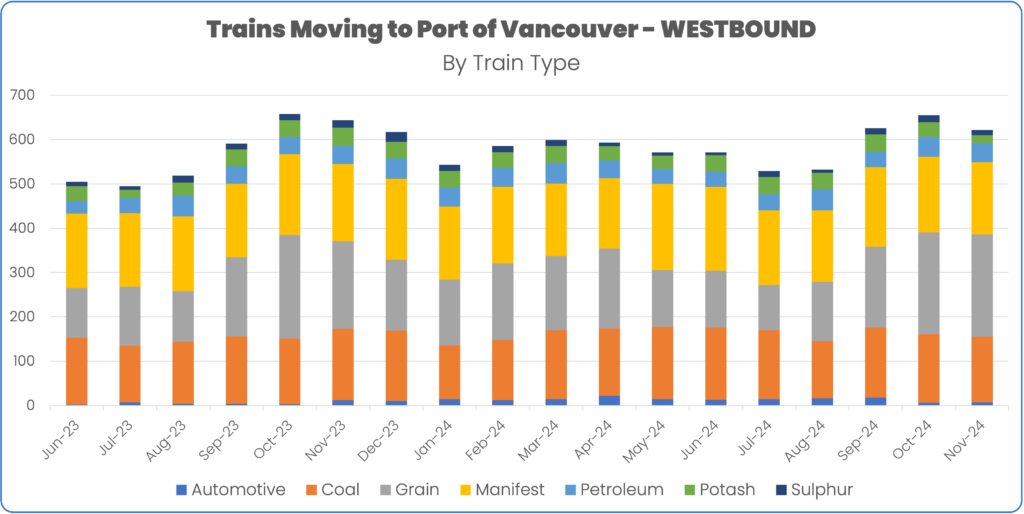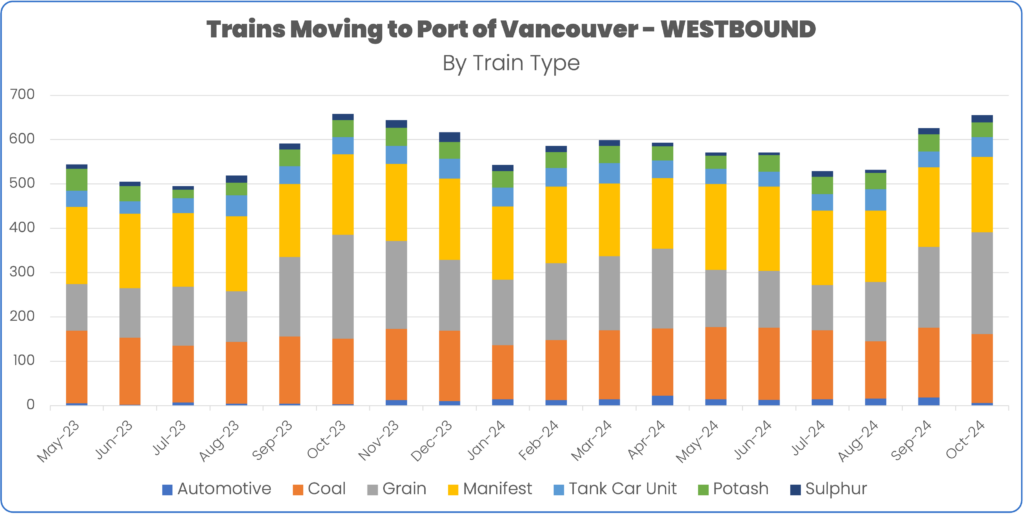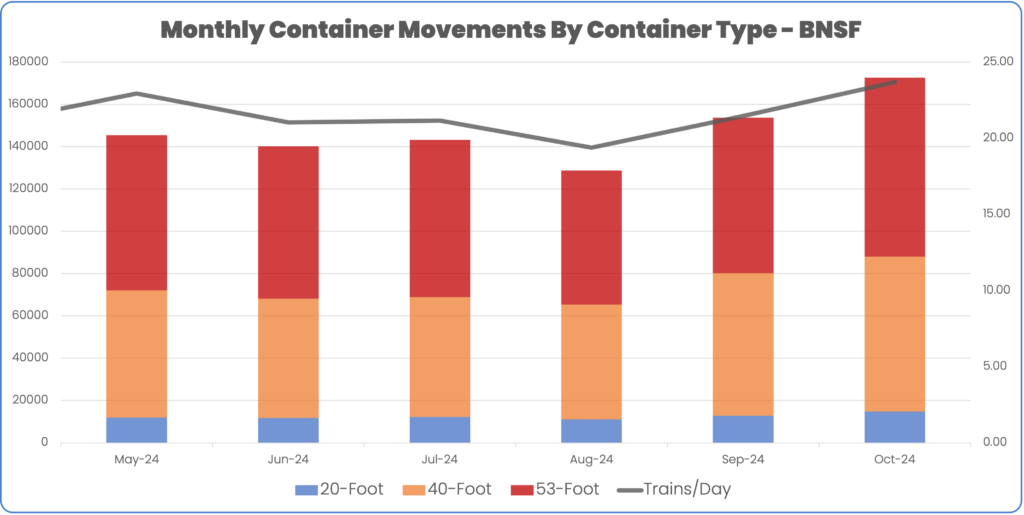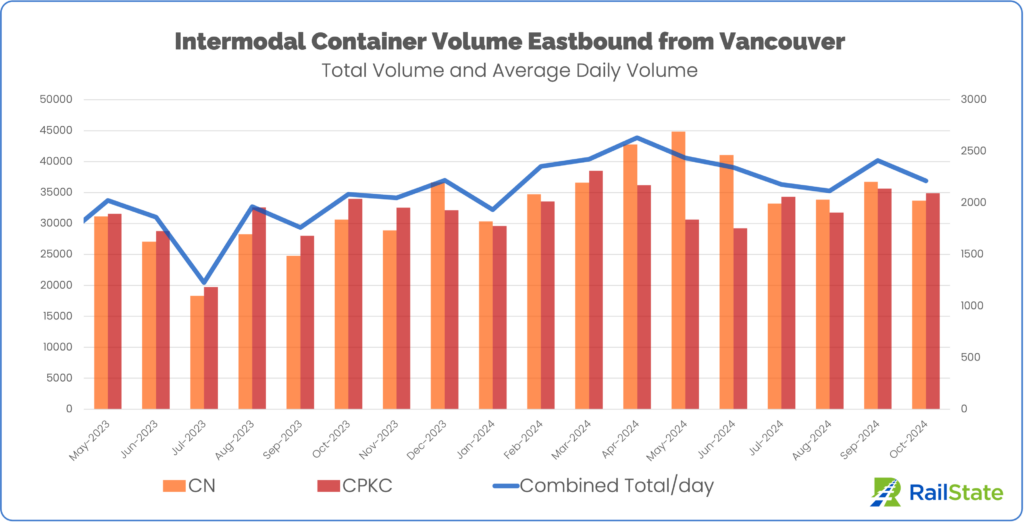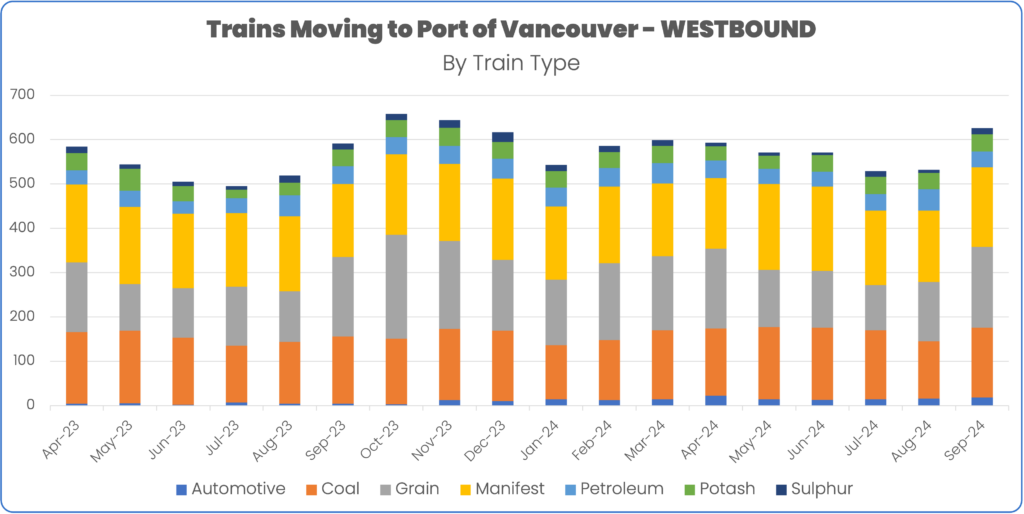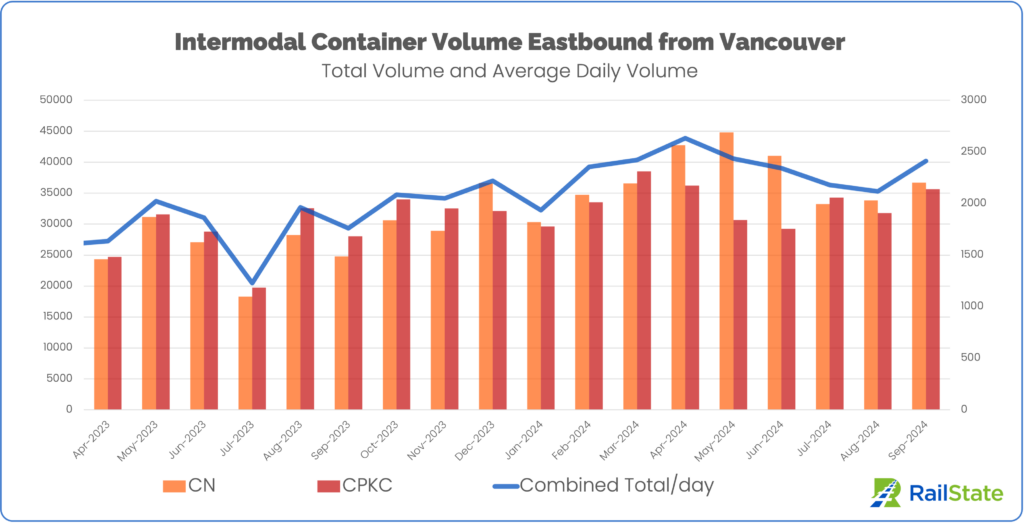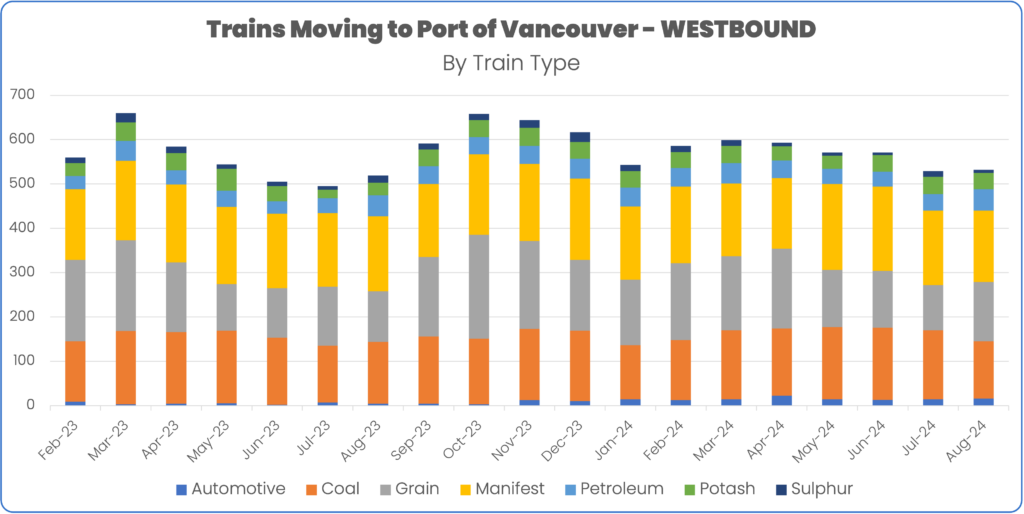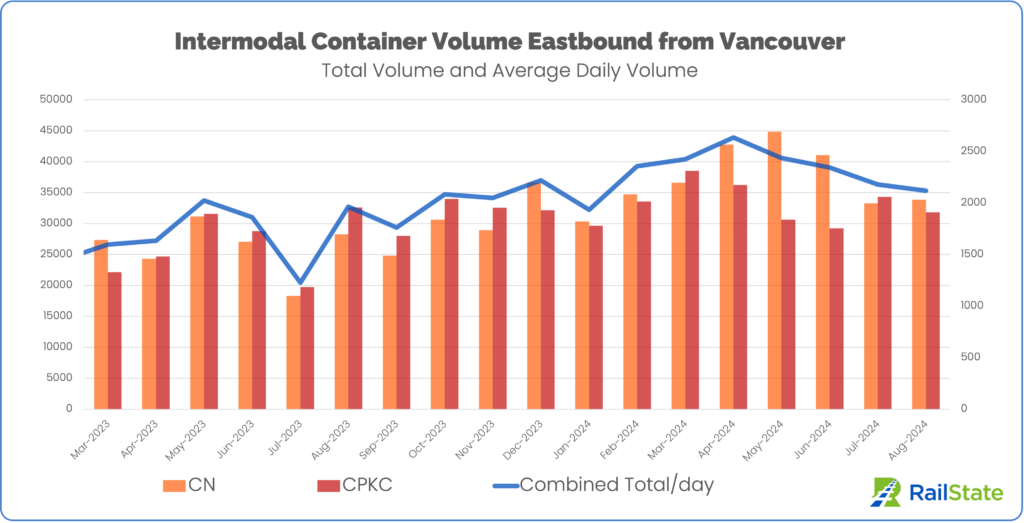Overall freight volume westbound to the Port of Vancouver decreased 5.0% in November due to work stoppages at the western ports.
- How it works
- Who it’s forShippersPublic SectorFinancial
- Use casesShippersPublic SectorFinancial
- Resources
- Company
- How it works
- Who it’s forShippersPublic SectorFinancial
- Use casesShippersPublic SectorFinancial
- Resources
- Company

